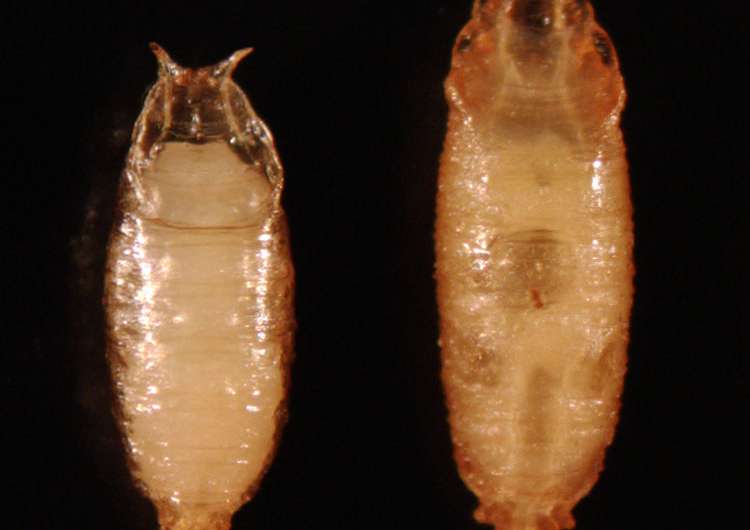Conventional 'free diffusion' model of steroid hormone release should be revisited

Steroid hormones - hormones such as testosterone and estradiol - control various aspects of animal biology and are crucial for the proper functioning of the body. Produced and secreted by endocrine glands in the body, these cholesterol derivatives are released into the blood through which they are transported to cells of various organs where they mediate a wide variety of important physiological functions.
Very little is known, however, about the mechanisms that regulate the release of steroid hormones from endocrine tissues. The commonly accepted understanding is that the process of simple diffusion is at work. Indeed, textbooks note that all steroids can pass through cell membranes freely.
But new research by a team of entomologists challenges this textbook view. In a paper published this week in Cell, the researchers report that in fruit flies, the focus of their study, the release of the steroid hormone "ecdysone" is tightly regulated by signaling pathways in the cell.
Ecdysone in the fruit fly is packed into vesicles in an endocrine organ. The new work, which relied on molecular genetic tools to achieve the results, suggests that the trafficking of steroid hormones out of endocrine cells in the fruit fly is not always through a simple diffusion mechanism as presently thought, but instead can involve a regulated vesicle-mediated release process.
"Without these signaling pathways, ecdysone is not released in the blood of fruit flies," said Naoki Yamanaka, an assistant professor of entomology at the University of California, Riverside and the lead author of the research paper. "Since our finding challenges our general assumption of how steroid hormones travel from cell to cell, this may lead to novel methods of manipulating a variety of biological processes known to be regulated by steroid hormones, such as immune response, salt and water balance, glucose metabolism, and sexual maturation during juvenile development. Thus, our findings not only have a huge impact on basic aspects of biology, but also have obvious clinical as well as commercial potentials."

Yamanaka explained that the pathways used for the secretion of ecdysone are very likely to be conserved in all insects.
"Ecdysone controls the development of all insects, including pests that damage crops and vectors of diseases such as malaria, dengue and yellow fever," he said. "Our work could guide researchers in finding ways to control the spread of crop-feeding larvae and deadly mosquitoes, thus providing agricultural and health benefits."
He added that it is likely that the same pathways for the secretion of steroid hormones are in operation in other animals and humans. His lab plans to explore this aspect of the research next.
"If the signaling pathways are conserved in humans, the development of novel ways of controlling steroid hormone signaling could lead to better treatments of inflammations, some type of cancers, and all other pathological processes influenced by steroids," he said.
Journal information: Cell
Provided by University of California - Riverside


















